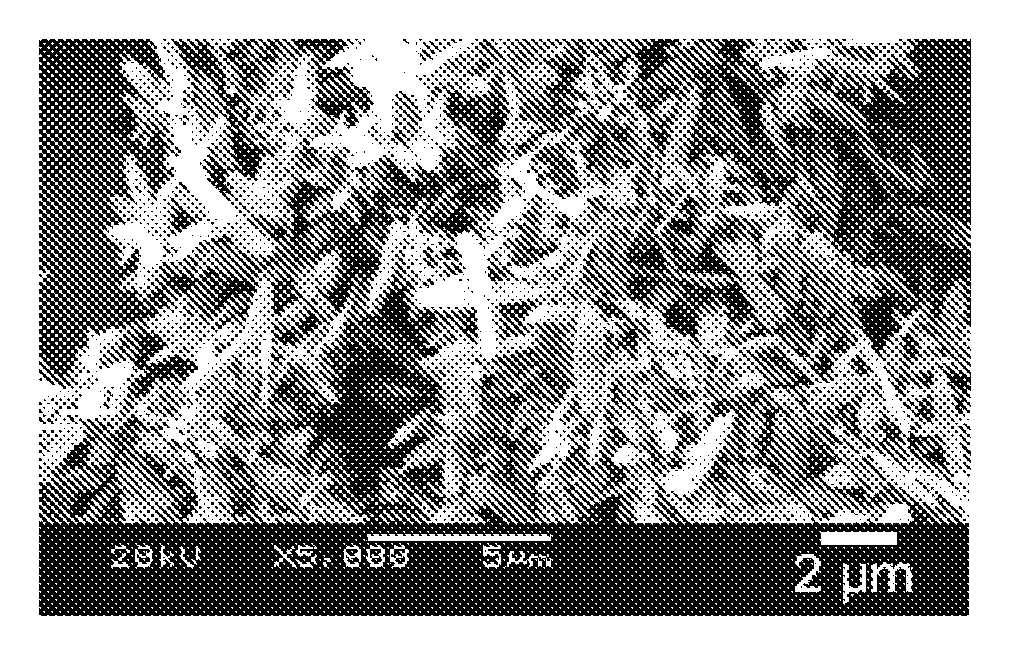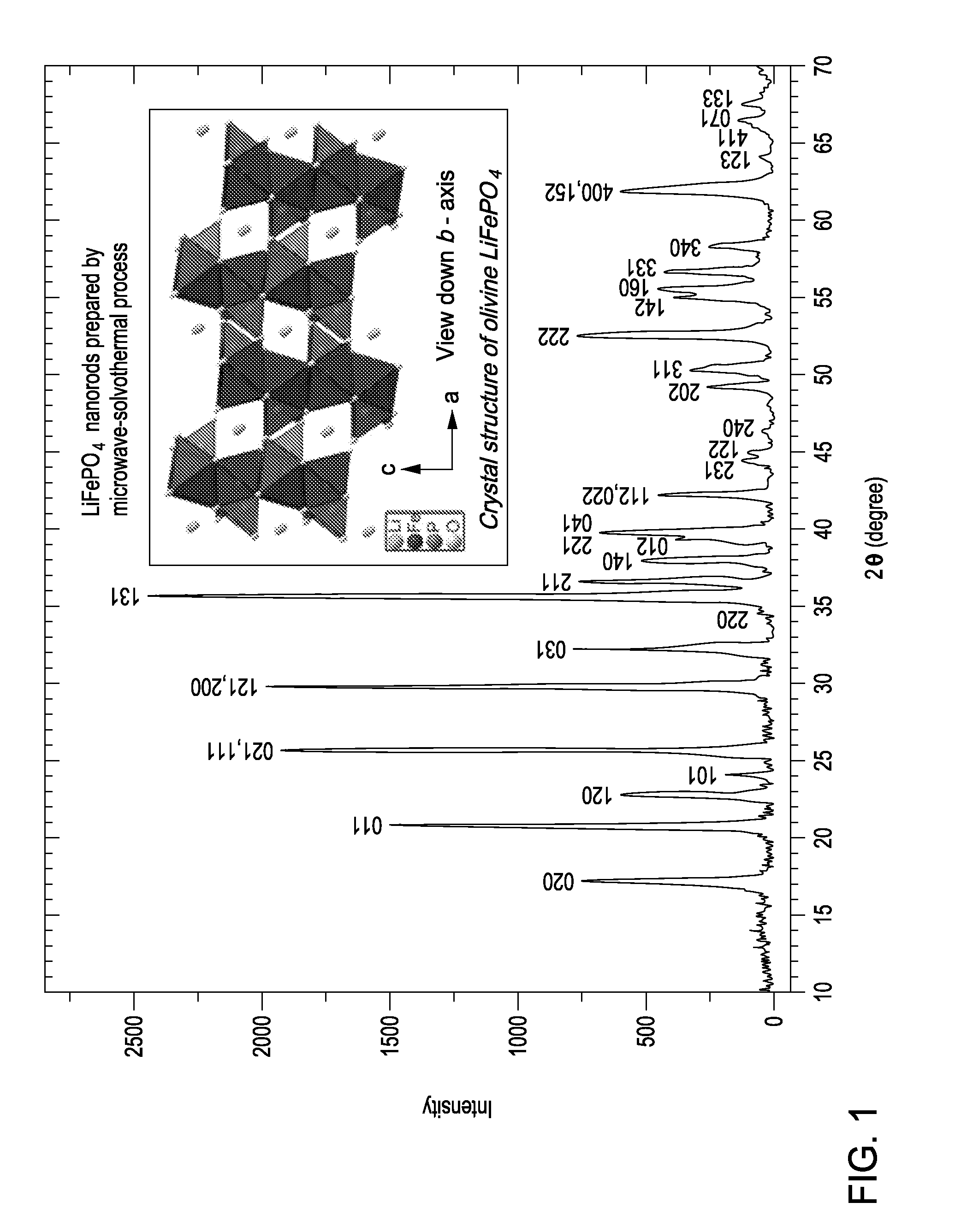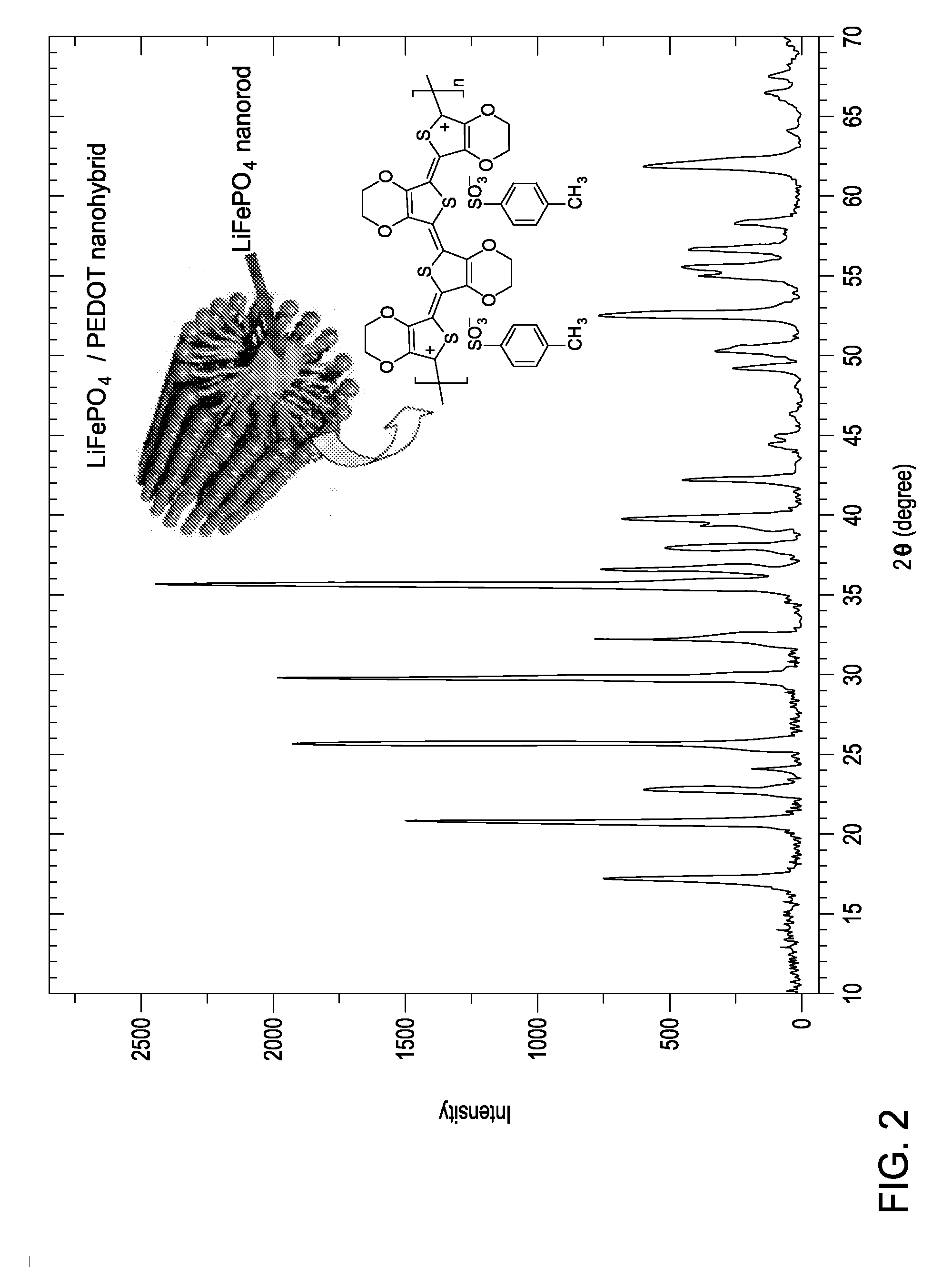Rapid microwave-solvothermal synthesis and surface modification of nanostructured phospho-olivine cathodes for lithium ion batteries
- Summary
- Abstract
- Description
- Claims
- Application Information
AI Technical Summary
Benefits of technology
Problems solved by technology
Method used
Image
Examples
example 1
[0083]The present invention provides a simple, single step novel process based on microwave irradiated solvothermal reaction for the preparation of nanostructured phospho-olivine cathode materials for lithium secondary batteries. LixMyPO4 where 03PO4 drop-wise at room temperature so that the molar ratio of Li:M:P in the precursor solution is 1:1:1. The homogeneous, transparent yellow gel formed was transferred into quartz vessel and placed on a turntable for uniform heating in an Anton Paar microwave irradiated synthesis system (Synthos-3000). The system was operated at a frequency of 2.45 GHz and a power of 1,000 W, and the temperature was raised to 300° C. and maintained for 15 minutes. These vessels were transparent to microwave radiation, so the contents in these vessels could be heated solvothermally.
[0084]When the reaction mixture was exposed to microwave radiation, the microwave induced rotation of the dipoles within the liquid forced the polar molecules to align and relax in...
example 2
[0085]The present invention provides a simple, single step novel process based on microwave irradiated solvothermal reaction for the preparation of nanostructured phospho-olivine cathode materials for lithium secondary batteries. Doped LixFe1-yMyPO4, where 03PO4 drop-wise at room temperature so that the molar ratio of Li:Fe(M):P in the precursor solution is 1:1:1. The homogeneous, transparent yellow gel formed was transferred into a quartz vessel and placed on a turntable for uniform heating in an Anton Paar microwave irradiated synthesis system (Synthos-3000). The system was operated at a frequency of 2.45 GHz and a power of 1,000 W, and the temperature was raised to 300° C. and maintained for 15 minutes.
[0086]These vessels were transparent to microwave radiation, so the contents in these vessels could be heated solvothermally. When the reaction mixture was exposed to microwave radiation, the microwaves induced rotation of the dipoles within the liquid forced the polar molecules to...
example 3
[0087]An electronically and ionically conductive polymer such as polyaniline, polypyrrole, polythiophene, and substituted poly (3,4-ethylenedioxythiophene) (PEDOT) was prepared via an oxidative chemical polymerization route. Since the 3,4-ethylenedioxythiophene (EDOT) monomer (Aldrich) is only slightly soluble in water and
[0088]Appropriate quantities of p-TSA and EDOT monomer were added to a mixture of methanol and water (1:1 by volume), and the polymerization reaction was initiated by adding under constant stirring the oxidant, ammonium persulfate dissolved in minimum amount of water; the molar ratio of EDOT and ammonium persulfate was 1:1. After 24 hours of the polymerization reaction at 30° C., the supernatants were carefully decanted, and the resulting dark blue conducting PEDOT was washed several times with a 1:1 mixture of methanol and water until the washing was colorless to ensure the complete removal of the unreacted monomer and oxidant. The p-TSA doped PEDOT thus obtained ...
PUM
 Login to View More
Login to View More Abstract
Description
Claims
Application Information
 Login to View More
Login to View More - R&D
- Intellectual Property
- Life Sciences
- Materials
- Tech Scout
- Unparalleled Data Quality
- Higher Quality Content
- 60% Fewer Hallucinations
Browse by: Latest US Patents, China's latest patents, Technical Efficacy Thesaurus, Application Domain, Technology Topic, Popular Technical Reports.
© 2025 PatSnap. All rights reserved.Legal|Privacy policy|Modern Slavery Act Transparency Statement|Sitemap|About US| Contact US: help@patsnap.com



